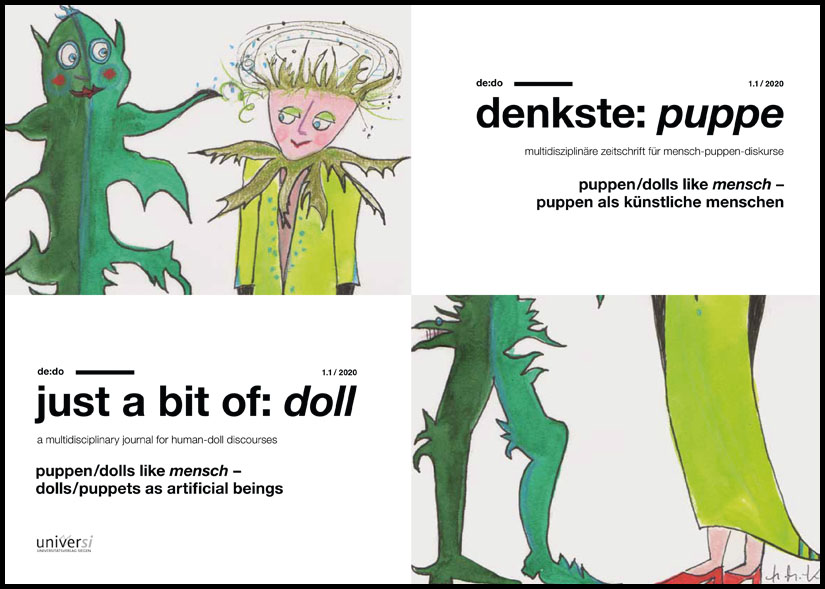Plasticine Dolls/Puppets as Artificial Beings – Neo-Romantic Varieties of the Human in the Work of Djurberg / Berg
Keywords:
puppet/doll, artificial human, bodies, Romantic Period, identityAbstract
Puppets / dolls made of plasticine are the main characters in Djurberg/Berg’s animated, silent films which are accompanied by Hans Berg’s musical creations. Nathalie Djurberg’s self-made puppets consist of anthropomorphic bodies and behave like human beings. Being artificial humans, they represent metaphors for human life and nature. This paper will explore the varieties of artificial humans created by the films as well as their aesthetic performance. With regard to human identity, the films follow an aesthetic of constant uncertainty radicalizing romantic motifs and poetic strategies, thus presenting unstable, multiple identities of dissociated inhabitants in worlds without borders.
Downloads
Published
How to Cite
Issue
Section
License
Copyright (c) 2020 Christina Templin

This work is licensed under a Creative Commons Attribution-ShareAlike 4.0 International License.



